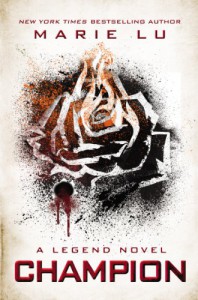Lysistrata
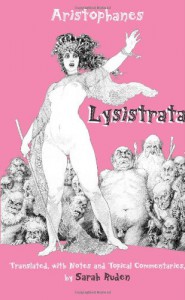 I stopped reading this because I've already finished the project I was reading it for, but it was funny up to the point I read– so a justifiable four stars for a book I didn't finish.
I stopped reading this because I've already finished the project I was reading it for, but it was funny up to the point I read– so a justifiable four stars for a book I didn't finish.
Koizora (Love Sky), Volume 1
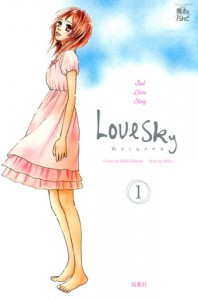 I tore through this series in a day, and, I'll admit, cried a few times.
I tore through this series in a day, and, I'll admit, cried a few times.However, there were a lot of things to dislike about this series, so for that, 3 stars.
Mugen Spiral, Vol. 02
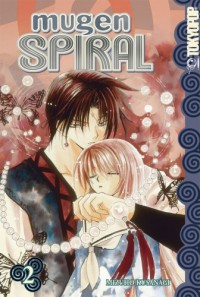 The only reason I gave this volume a lower rating than the first one is because the series ends with this volume, and rather abruptly at that. I don't know if this series was discontinued or if the mangaka simply dropped it, but regardless, the story was great while it lasted.
The only reason I gave this volume a lower rating than the first one is because the series ends with this volume, and rather abruptly at that. I don't know if this series was discontinued or if the mangaka simply dropped it, but regardless, the story was great while it lasted.Three stars for a good story with a disappointing end.
The Assassin and the Princess
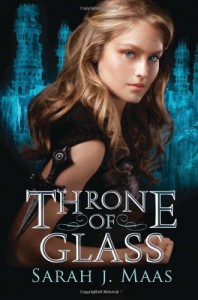 I picked this book at random from my library's young-adult section without really reading the summary, or knowing anything about the author. Basically, I didn't really have an idea of what I was getting into.
I picked this book at random from my library's young-adult section without really reading the summary, or knowing anything about the author. Basically, I didn't really have an idea of what I was getting into.Plot
This book tells the story of Calaena, an assassin in a fictional medieval/fantasy world. Prior to the beginning of the novel, she was charged with several crimes– obviously murder, for starters– and is sentenced to slave labor in a salt mine and has already been there for a year when the book begins. One day, the Crown Prince Dorian comes to the salt mine and offers her a deal: his father, the king, is holding a battle royale competition to pick his champion, an assassin servant that does his bidding. If Calaena wins and serves the king for four years, she'll be officially free once her contract is done. As the competition progresses, other contestants are turning up dead, and Calaena must now face a vicious murderer with an agenda in addition to the tyrant king and her fellow would-be champions.
In essence, this book is what you would consider character-driven. The world felt very undeveloped, as though it was all last-minute. To my understanding, the four prequels to this book are where the world is explored in-depth, but your reader shouldn't have to read prequels just to understand what's going on. Prequels are meant to add to a world after the main series books have already established the basics.
The mystery element also wasn't very good. I figured out who the murderer was before they even found the second body, but it takes Calaena well over 350 pages to notice the obvious.
The most glaring issue with this book is the cheap love triangle, but I'll go into that later.
Characters
And later is now. So, as mentioned, the love triangle is not too great, to put it lightly. Within the first two chapters, you can already see who's a part of it (obvious spoilers, but spoilers nonetheless Calaena, the prince Dorian and the captain of the royal guard, Chaol). Now, that's not to say that the concept of a love triangle is bad, because it's really not; plenty of books can use a love triangle gracefully to contribute to character development and plot. However, this was not the case with Throne of Glass. The relationships between the characters was meager, at best. Most of their conversations consist of banter and Calaena batting her eyelashes, and of course, the random uber-personal and angsty confession from Calaena to humanize her. All in all, it felt less like two guys who like the same girl and more like two guys who find the same girl really hot.
I have mixed feelings towards the protagonist, Calaena. Her most obvious flaw is that she loves smack-talking. Just all the time, it's 'she could disarm that guard in two seconds flat' and 'she could escape from this castle if she really wanted to– she just doesn't want to' (more or less paraphrased, but you get the idea). She isn't actually able to prove that she is as good as she claims until the end of the novel, given that throughout the beginning, she's still very weak from a year of labor and malnutrition.
Speaking of which, she's also constantly fluctuating between shallow and reasonable. When she first looks at her reflection after she's left the salt mine, her first thought is that she's gone down a few cups sizes from losing too much weight. She doesn't even mention how out of shape she is until her training starts, which you would think she would notice first, considering how much her job depends on her physical strength.
The other characters were, for the most part, dull. Cain was your average smug antagonist, Prince Dorian your average smoldering love interest, Chaol your average 'I like you but I'm gonna totally deny it' guy, and so on. If there was one interesting character, it was Princess Nehemia. She's the monarch of a kingdom that was invaded and conquered by Dorian's father, and she has been assisting rebels ever since their insurgency started. She added a lot of depth to this severely flat world.
The Writing
It wasn't bad, but it wasn't good. Maas's biggest problem is that she really likes to state the obvious. Some things can be left to readers to interpret, or, as in most cases, your reader can make basic assumptions and see how you arrive from point A to point B. Otherwise, it had some nice flow to it– a lot of metaphors and descriptive writing. But her world-building leaves a lot to be desired, because it feels like she came up with the characters and in order to set them in her own world, made up countries as she went along to fit her characters, not her characters to fit her world.
The Cover
This is, admittedly, a generic YA cover. Blonde model, some detailing of a glass castle on the back, yadda yadda yadda. Nothing super interesting to look at.
Funny note: I also couldn't take the cover seriously because of the dagger. They sell the same one at Party City, and I had used it for a Halloween costume in the sixth grade. Needless to say, it doesn't exactly look authentic.
Final Rating: 2.5 stars
Crescendo
 This book sucked. Plain and simple. There wasn't a single moment where I could take it seriously. Reading this gave me a stomach ache- the only cure was to stop reading and just laugh off the pain.
This book sucked. Plain and simple. There wasn't a single moment where I could take it seriously. Reading this gave me a stomach ache- the only cure was to stop reading and just laugh off the pain.But I digress. This is a proper review, after all, and I can't just make fun of the book the whole time.
So let's break down exactly why this book sucked.
Plot
?
There was a plot?
If there was, I didn't quite catch it. The majority of this book consisted of Nora whining over a) breaking up with Patch, b) how much of a twat Patch is (which should cancel out option A– but it doesn't. ~Nora Logic~), and c) the death of Nora's father.
Obviously, only the last of these three points could be considered a proper reason to angst. However, anything relating to Nora's father is pushed back behind the first two points. We only get a few clues about Nora's father, most of which are hallucinations that didn't really happen, so they're just bogus clues.
But plenty of time is spent ~developing~ Nora and Patch's relationship. I say developing mockingly because literally nothing has changed between them since the first book. Patch still doesn't respect Nora's privacy and right to date someone that isn't Patch, and Nora just has jealous fits over her rival, Marcie, hanging out with Patch, even though Nora was the one who broke up with him in the first place– which brings me to my next point.
Characters
They sucked. All of them, except for Marcie– who likes to fuck up Nora's shit and that makes me laugh– and Vee– who isn't as much of a shitty friend in this book as she is in the first one, and she also makes me laugh.
Nora is Nora. Stupidly indecisive about things that couldn't be any more clear-cut and set out in front of her. Helpless in every situation and does little to nothing to advance the (admittedly nonexistent) plot.
Patch is still a douchebag. Obsessive and creepy and stalkerish. He's supposed to be wank fuel for preteen girls, I guess, but I'm not really feeling the appeal here. I mean, if your EX-boyfriend (EX EX EX EX EX) barged in on you while you're with another guy and punches him in the face, wouldn't that piss you off? Just a little? Considering he's your ex? Yeah, that's what I mean by saying he's a douche.
As mentioned before, Marcie and Vee were tolerable– although there is a bit of hypocrisy on Marcie's part. The slut-shaming that goes into her character is massive, but Marcie doesn't seem to care– which is great! Slut-shaming sucks and it's a pretty big indicator of a shitty young adult novel. However, despite the fact that Marcie doesn't care for slut-shaming against her, she uses it– a lot– in someone else's situation. This is a pretty big spoiler, so skip it if you don't care for specifics. Marcie reveals that her dad's having an affair with a single woman, and calls the woman a whore– disregarding her father's part in his infidelity, and the fact that the woman's only partner is Mr. Millar. But besides that, both Vee and Marcie added a lot more to the story in terms of humor (on Vee's part) and plot (on Marcie's part). However, two good secondary characters can't ultimately fill up the places of two empty main characters.
Scott is your generic third-wheel/plot device guy. He made no impact whatsoever on me. Surprise, surprise, he leaves at the end of the book. Didn't see that coming, nope.
The Writing
...was disappointing, as usual. If you've read the first book and want to read this one in hopes of an improvement... you'll be disappointed.
Cover
At the very least, the cover is consistent with the first book in the series. To me, it seems rather dull, because the whole mesh of gray and silver just doesn't appeal to me, and the red isn't enough to catch my eye.
Final Rating: 1 star.
SPOILER ALERT!
Mariana
 It was boring. That is all.
It was boring. That is all.Alright, alright, details.
Story & Plot
Julia Beckett is a children's book illustrator who, on a seemingly random whim, moves from her apartment in London to a rather run-down but charming house in a little (and I mean little) village. She meets the villagers (not that there are very many of them) and settles into her new life, adapting rather easily to village life even though she's lived in London all her life.
Whilst getting to know the town, she hears a rumor that there used to be a ghost haunting her house thirty years prior- coincidentally, it disappeared around the time Julia was born.
Julia starts experiencing strange hallucinations of sorts- at random times, it seems as though the perspective of the character has changed; she is no longer Julia Beckett, but Mariana Farr, a young girl in seventeenth-century England desperately trying to escape contagion of the black plague.
It certainly sounds interesting at first, but as you read it, you see that Kearsley has done very little to expand on this idea. Most of Julia's time trips are dull. So. Very. Dull.
From wondering around her house to cooking to taking care of a baby, Mariana doesn't do much. I mean, I get that it's the seventeenth century, but still, if you're going to write a book that completely centers around a person experiencing another person's life, you should at least make that other life interesting. Even in just Mariana's life, there are plenty of other character who would have worked well in her place- the conspirators, the nobles, the people with the plague- anyone, really, would have been more interesting than Mariana and her ~forbidden love story~.
So, after some three hundred pages of time tripping and boring boring boring seventeenth-century conspiracies and romance, the pseudo-climax is finally reached. I say pseudo because wow this climax is boring as hell. And then, literally within the last five pages, Kearsley springs this plot twist on you, with barely any time to justify or explain. It seems like she got rather lazy with the ending and left it at that. What's more, it seems like she's been rather lazy wth the whole book. You only get glimpses of Mariana's life, and the holes are filled in with Julia's daily routine. It's like Kearsley couldn't write enough material for Mariana, so she stuffed up Julia in her place.
It's not memorable or interesting. It won't hold your attention for very long. It kinda... makes you wanna... fall... zzzz.....
Characters
Boring boring boring boring. I don't even remember most of them. What I do remember, however, is that none of them were likable enough to win my sympathy- or, alternately, none of them were annoying enough to warrant my dislike. In short, I didn't care for them, one way or another.
Cover
The cover's alright. It's kind of dull, but I've seen worse.
So, in short:
This book is so boring holy crap
This could have been a fantastic book. This could have been very interesting and memorable and a good read. However, Kearsley falls very far from her mark, and, having read another one of her books, it's become quite obvious to me that this is her writing style, and, honestly, it's not my favorite. Far from it, in fact.
Of course, this is my opinion, and just because I didn't like this book, doesn't mean no one else can. There are some people who enjoy this sort of slow-paced writing, but again, this isn't really my sort of book.
Remember Me
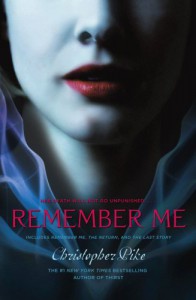 See, here's the thing; it's three books in one. I liked the first. I didn't like the second. I hated the third. So I averaged the ratings (4, 3, 2) but then I thought my overall dislike of the series was so great three stars was too much, so I gave two instead.
See, here's the thing; it's three books in one. I liked the first. I didn't like the second. I hated the third. So I averaged the ratings (4, 3, 2) but then I thought my overall dislike of the series was so great three stars was too much, so I gave two instead.Starting with Remember Me: Shari Cooper falls from the fourth story of her friend's apartment one night at a party. As a ghost, Shari stalks her friends, absolutely certain that one of them pushed her over.
It's an interesting enough plot, and it was wonderfully written.
Then it all goes downhill with The Return.
In the afterlife, Shari is given the chance to live again in the body of an 18-year-old who gave up on life.
I thought this one was rather dull, but it wasn't bad, per se. Just boring.
The Last Story, however, is boring and bad. Shari, having overcome all the struggles of suddenly returning from the dead, now faces various temptations that threaten to distract her from what is really important.
Here, we see nothing of the Shari from Remember Me. She has somehow grown weak-willed, giving in to the slightest challenges and threats. What happened to the girl who followed her friends and intruded upon their dreams to find her killer? What happened to the girl who would stop at nothing to make sure she is remembered?
I can't answer any of that, as I'm not the author. My best recommendation would be to read Remember Me, and, if you're willing to, read The Return. If you have to force yourself to finish The Return, don't bother with The Last Story.
SPOILER ALERT!
The Awakening
 I was told that the television show adaption of this novel was very, very good, but I was not aware that it was a loose adaption. I emphasize loose here because apparently, the television show is good, but the book is most definitely not.
I was told that the television show adaption of this novel was very, very good, but I was not aware that it was a loose adaption. I emphasize loose here because apparently, the television show is good, but the book is most definitely not.Let's start off with the basic idea. Stefan Salvatore, an Italian vampire, moves to Fell's Church, wishing to be able to fit in among humans. His brother, Damon, is also a vampire. They share a very harsh mutual hatred. Stefan is the 'good' brother, while Damon is the 'bad' brother.
Stefan was tolerable enough. He apparently cared for Elena and put her safety above his own.
Damon is an arrogant ass who, in my opinion, lacks any attractive qualities- besides his appearance, of course.
(One can't help but think that his appearance is an attempt to redeem his less than desirable personality traits)
I, personally, prefer Stefan. He was less of a dick. Damon is a sack of dicks
Now. Elena.
Where do I even start. Where.
I despise Elena. Not because she's a slut. I don't believe in slut-shaming. Not because she's popular. Not because she's pretty. Hell, I even acknowledge that she's a pretty good girlfriend (only towards Stefan, though), resisting Damon and refusing to give in to his temptation.
I hate her because she's unbelievably shallow.
She fancies herself a queen. A real queen. I cannot even count how many reference are made regarding queens. Commoners, a royal table, a scepter, crowns, and a royal court (though, in her defense that was for Homecoming- but still). A character accurately describes her, saying, "You [Elena] only want everybody and everything revolving around Elena Gilbert. You only want everything you don't have." She treats people less popular than her like trash (e.g., Frances), manipulates others into doing as she likes (e.g., Jean-Claude, Meredith's rumor-spreading, making the blood pact with Bonnie, etc.), and nearly loses her shit because a guy walked by without looking at her.
Shit just got serious.
So, evidently, the entire universe is off-balance because Stefan didn't look at her as he walked by.
God help you Elena.
If you like shallow girls, first-class cunts I mean seriously Damon is an ocean of douche I MEANT RUDE BOYS, and cheap romance, go for it bro.
Otherwise, stick to the TV show.
P.S.: Want to have a good laugh? Try reading all the intimate moments with 'Make It Rain' playing in the background. Maybe that's why I can't take this book seriously.
Fifty Shades of Grey
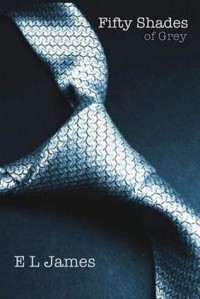 Normally, I would never have given this book a second glance had I seen it in a bookstore. But while I was desperately bored on an international flight, a friend offered to lend it to me, and I was hardly in any position to turn down a form of entertainment.
Normally, I would never have given this book a second glance had I seen it in a bookstore. But while I was desperately bored on an international flight, a friend offered to lend it to me, and I was hardly in any position to turn down a form of entertainment.This book could hardly be called professional. If I hadn't known any better, I would have assumed it was a parody, or written by a thirteen-year-old. Anastasia Steele is yet another dull and compliant protagonist- as if there weren't enough- and Christian Grey is, in simple terms, a glorified stalker. His wealth and good looks only serve to distract the reader from the fact that he has a less than winning personality and is a mentally disturbed control freak- in the very worst sense.
And god knows why anyone would consider the plot a good one. A handsome billionaire happens upon a socially awkward girl (who, in all honesty, has unhealthily high standards), and becomes obsessed with her within thirty minutes of meeting her. I don't know about anyone else, but to me this spells out a serious mental issue.
E.L. James's writing style is awkward, and at times she uses certain words or phrases that grow to annoy the reader; her repeated mentions of Anastasia's medula oblongata- a term many readers would be unfamiliar with, and serves no purpose other than being a flashy word- and of Anastasia's 'inner goddess' are prime examples.
I could write a book on all the reasons I dislike Anastasia (Fifty Shades of Anastasia Steele's Failures- instant best seller right there), but the most prominent reason I could give is her overall calmness about having a sadistic stalker- as if it were something to be flattered by.
If you're into cheap erotica, or need a good laugh, then by all means, have at it. I will only say though, if you're looking for decent erotica, just look around on the internet- it's not only better quality smut, but it's free too.
SPOILER ALERT!
Private
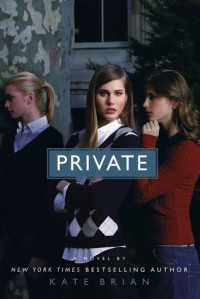 I really didn't like this book. For a number of reasons.
I really didn't like this book. For a number of reasons. Plot
The protagonist, Reed Brennan, a girl from a lower-class suburb, is accepted and receives a scholarship to Easton, an upper-class, rich-kid prep school. Upon arriving, Reed easily sees she doesn't fit in; this school is much tougher than she'd thought it would be, and she's quickly flunking her classes. She has close to no friends, with the exception of her roommate. And the obvious class disparity plays a role in Reed's 'misfortune' as well.
One day, she sees the Billings girls, students who live in the most elite dorm at Easton. The only way to get in is to be invited, and Reed wants nothing more than to be their friend, because they symbolize everything she never had.
Now, reasons why I don't like this book.
Characters
Reed is awful. Constance, her roommate, offers her friendship to Reed on several occasions, and is clearly one of the few characters in the book willing to do so. Yet, Reed blows her off, because Constance isn't in Billings, therefore not powerful, therefore undeserving of Reed's friendship.
And Reed mopes a lot. A lot. If she's not whining about how she wants to be in Billings, she's complaining about not having money, how dysfunctional her family is, how she's failing her classes, how she has no friends, etc. She rarely ever does anything to fix some of these problems- and believe me, most of her problems are very petty, and easily fixable- but Reed just wants to stare at the Billings lunch table and hope that her stalker-ish tendencies will win her some friends.
Her boyfriend Thomas is gross. He's an alcoholic/drug dealer/abusive boyfriend/an unfaithful boyfriend/basically an all-around douchebag. What makes it worse: he pushes Reed one day, causing her to hit her head and bang up her knee. She swears, to both herself and her 'friends', that she wouldn't see Thomas again. But whoops the next morning she just lets him into her room and immediately forgives him because he promised to go to rehab, despite the fact he humiliated her in front of everyone. In addition to: dealing drugs without telling her and then pretending to sympathize with her mother's addiction problems, getting her involved in his own family problems, making her feel guilty for not saying she loved him, etc.
The Billings girls are even worse. These girls have probably committed several crimes, but never get in trouble. Why? Because they're rich and/or pretty. That's it. They're cruel bullies, merciless bitches, and horribly spoiled. At one point, they demand that Reed go and steal the answers to Ariana's (the 'innocent' Billings girl) biology test within twenty minutes (or else they'd call campus security). Mean, right? But it gets better yet: Ariana doesn't even take biology. They made Reed do it because they were bored. What kind of shitty friends do that?
Noelle is their ringleader, and clearly the worst offender. She takes it even farther by suggesting that Reed spike her history teacher's coffee with alcohol to get him fired, and she is later implied to have planted cheat sheets in her fellow dorm mate's room to get her expelled. She frequently verbally abuses Reed- and to an extent, Taylor, the nicest of the Billings girls, who is supposed to be Noelle's friend, considering she was willing to do all of Noelle's homework for the entire semester.
All the other characters didn't seem to play any major role, besides Reed's drug-addicted mother and passive father, but they never make a real appearance in the book.
The Cover
I bought this book in paperback, since they almost never had it in hard cover at the book store. It's rather unimpressive, with three girls with neutral expressions on the front and a lone girl on the back leaning against a tree. I'm assuming these are supposed to be the Billings Girls, with Noelle, Ariana, and Kiran on the front, and Taylor on the back. It's an alright cover; the shiny title catches the eye, but the rest of it is not very appealing since it's all dull colors and generic models.
So. Those are the reasons I don't like this book. I was going to read the whole series, but after discovering just how many books there (fourteen main series books with individual arcs, two prequels, and a spin-off series with six books), I decided against it. That's a lot of money to waste on a not-so-great series.
Radiance
 So. This was unpleasant.
So. This was unpleasant.I bought this book, unaware that a) Alyson Noel is a notoriously careless and, to be blunt, horrible writer; and b) that this book was part of a spin-off series– I had thought it was a stand-alone book. So, you could say I went into this book with little to no expectations, having read nothing of this writer before and having not read the main series (which, honestly, I'll probably never do).
Plot
The book follows Riley Bloom, a young girl who died alongside her parents in an accident and tells of her time in the after-life as she becomes a Soul Catcher, whose job is to help other souls cross the bridge into the after-life.
It's boring. That's all I can really say.
I should have expected this, since it's such a thin book, but everything happens very quickly. Start of the book, boom, you're introduced to Riley (and quickly pick up on her bratty personality), her purpose in the after-life, and her love interest– a guy named Bodhi who is berated by Riler for not dressing like Joe Jonas.
That's right. You read that correctly. Joe Jonas.
Besides the obvious unwritten law that writers should never include modern pop culture in their novels, since it ages terribly within a matter of months, this just further enhances Riley's brattiness levels.
The plot is bare and very weak as a whole.
Characters
As mentioned above, Riley is horrible. The most annoyingly selfish twelve-year-old that ever was. Her so-called 'character development' happens so quickly– in a matter of four or five pages, really– that it's completely unrealistic. She can apparently conquer all her fears and doubts in less than a chapter. Okay, riiiight.
Bodhi is... weird. Awkward and weird. I mean, he's supposed to be a tragic love interest of sorts– mimicking the main series love interest, from what I understand– but it just comes off... weird. Maybe it's because the book is told through Riley's point of view and she's a twelve-year-old, or maybe it's Noel's writing (probably the latter), but as a character, he's just... NOkay.
And then you've got these three boys who are Riley's first assignment, and I don't even know what the hell's going on with them. Like, I can't explain them to you despite having read and re-read their chapter whilst writing this review.
The Writing
Honestly, one of the biggest challenge a writer faces when writing from the perspective of a character not in their age range is establishing a consistent voice. Noel failed miserably at this. At times Riley sounds like a third-grader, at others she gains this weird old-man-like wisdom, and, of course, her inner thoughts are peppered with pop culture references– which, as I mentioned, is really, really bad in a book, because that book will most definitely not withstand the test of time.
Of course, Noel's writing style in and of itself annoys me. It lacks flow, consistency, or literary qualities, and it's just unpleasant to read.
The Cover
The cover is what fooled me into thinking this would be a pleasant read. It's a gorgeous cover– I'll at least admit that. Really, the title font, the girl's, the bridge in the background, the flower field– it's all really eye-catching. Too bad it's also misleading.
Final Rating: 1 star.
The Host
 Despite its flaws- it is a Stephenie Meyer novel, after all- The Host is better than I expected it to be. I had originally planned on reading this book first, then the Twilight series. Thank god I didn't. Reading Twilight made me have incredibly low expectations for this book, but the quality in writing is noticeably different. Granted, some common elements of Twilight are present in The Host- a love triangle, a rather large age gap, and sickeningly sappy love-love behavior- but overall, had I not seen Meyer's name on the cover, I would have thought it was written by a different person.
Despite its flaws- it is a Stephenie Meyer novel, after all- The Host is better than I expected it to be. I had originally planned on reading this book first, then the Twilight series. Thank god I didn't. Reading Twilight made me have incredibly low expectations for this book, but the quality in writing is noticeably different. Granted, some common elements of Twilight are present in The Host- a love triangle, a rather large age gap, and sickeningly sappy love-love behavior- but overall, had I not seen Meyer's name on the cover, I would have thought it was written by a different person.Nothing absolutely ground-breaking, but it's a good enough book.












